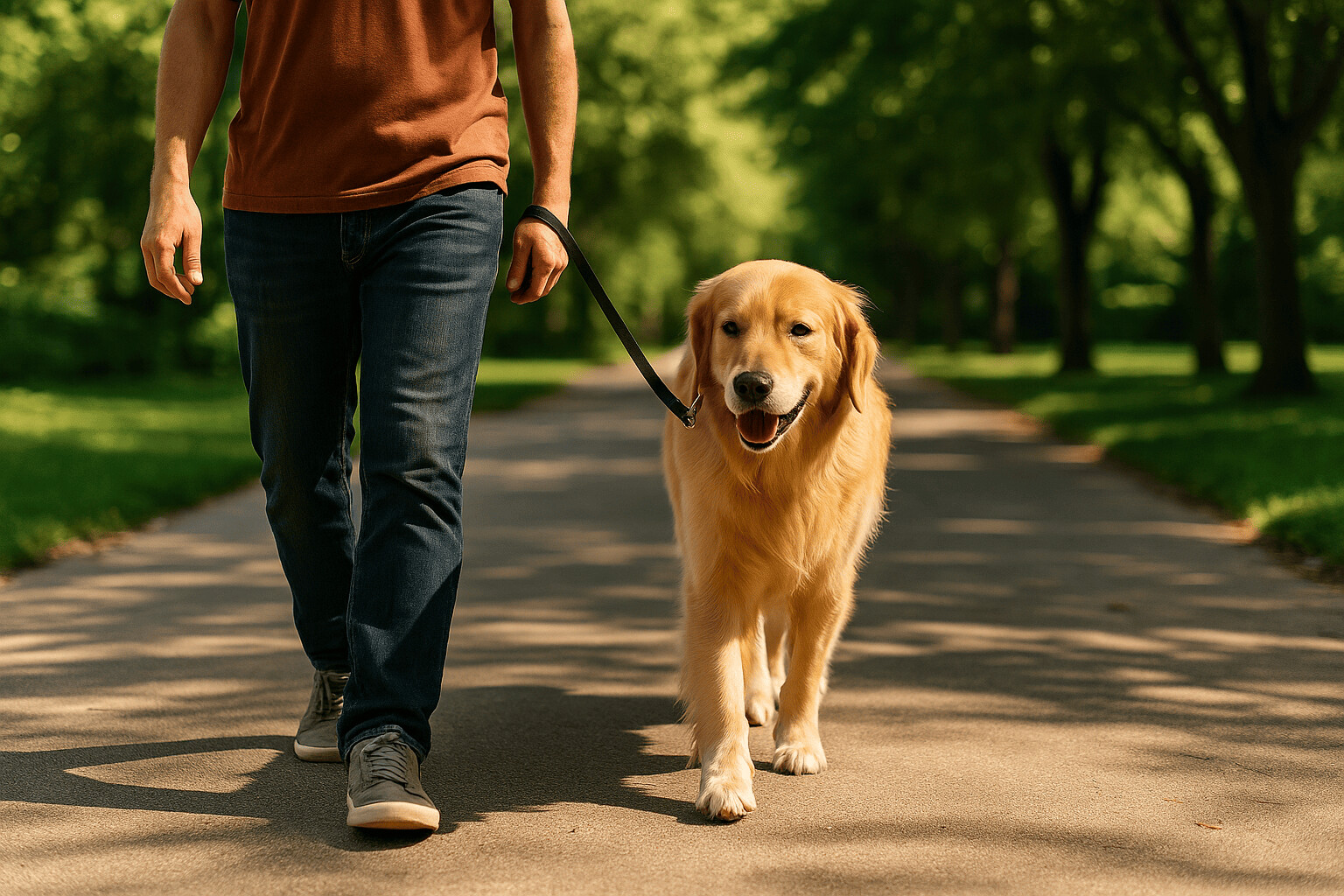
Why the Walk Matters
The walk is a ritual—your daily chance to channel energy, satisfy your dog’s urge to travel, and reinforce calm leadership. It’s less about tiring the body and more about guiding the mind.
Before You Go: Earn the Leash
- Clip the leash only when your dog is calm and still. If they spin or whine, pause and reset.
- Use simple tools fairly, never to punish: a fitted martingale collar, a no‑pull harness, or a head halter. Fit with the two‑finger rule.
Thresholds: Calm Opens Doors
You step out first, then invite your dog to follow at your pace. Keep them beside or just behind you—no towing. Use a steady line with a classic 6‑foot leash (skip retractables).
On‑Leash Skills: Guide, Don’t Drag
- Short line, soft hands: Keep slack in the leash. Tension invites counter‑tension.
- Correct, then release: A quick, light redirection (tug‑and‑release or body block) then immediate slack.
- Structure first, sniff second: Start in a focused heel for a few minutes; add brief sniff breaks as rewards.
Troubleshooting
- Pulling: Shorten the leash; redirect before it goes tight; reset your pace. Repeat consistently.
- Reactivity (barking/lunging): Increase distance early; claim space with your body; pivot away and re‑approach calmly.
- Scavenging: Practice “leave it” at home; trade for a better reward; consider a humane basket muzzle for chronic street snacking.
- Weather drama: Use micro‑walks at first; keep the ritual; add a light rain coat or booties for sensitive paws.
Simple Weekly Plan
- Days 1–2: 10–15 minutes, strict structure (heel + frequent resets).
- Days 3–4: Maintain structure; add short sniff windows as rewards.
- Days 5–7: Vary routes; add mild challenges (greater distance from triggers, new surfaces) while keeping calm leadership.
Walking Reactive or Anxious Dogs
Some dogs lunge, bark or freeze when confronted with certain triggers. Start by walking at a safe distance, reward calm glances toward the trigger and slowly close the gap over several sessions. Pattern games, like “look at that,” can build confidence without confrontation. If your dog’s arousal escalates, step away and try again later—consistency is key. For guarding around food or toys, see our resource‑guarding guide; if separation stress is the root, integrate decompression exercises from our separation‑anxiety article.
Navigating Busy Environments
City streets, farmers’ markets or trails with cyclists can overwhelm even seasoned dogs. Practice on quieter streets first, reinforcing loose‑leash position and periodic check‑ins. Use hand targets or “watch me” cues before each intersection; reward calm waiting at crosswalks. Slowly add distractions—one at a time—so your dog learns to trust your leadership. If your pup tends to bolt out of doors or vehicles, review the strategies in Escape‑Proofing Your Home to build safety at every threshold.
Enrichment Walks & Games
Walks aren’t just about mileage; they’re opportunities for mental stimulation. Vary your routes to include different textures—grass, gravel, sand—and allow frequent sniff breaks. Scatter a handful of kibble in the grass for your dog to forage or practice “find it” with hidden treats. If your dog enjoys problem‑solving, enroll in a nose‑work class or lay simple tracking trails with their favourite toy. Read more about reading your dog’s signals in our canine body language primer.
Humane Society trainers note that positive reinforcement—using praise, food or toys—encourages dogs to repeat desired behaviors and makes training sessions more enjoyable for both dog and handler. Humane Society: Positive Reinforcement